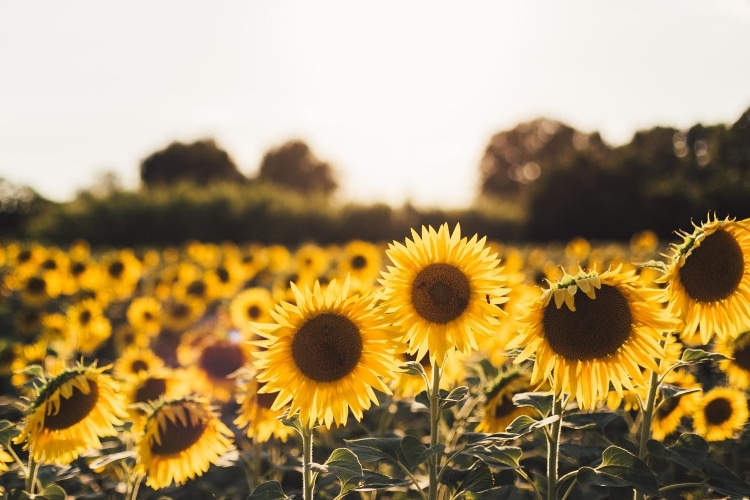The perceptions we have of ourselves, our lives, and events that occur around us are subjective. On a rainy day, for instance, we might focus our attention on the picnic that had to be cancelled or on the soil that is now receiving nourishment. Where we place our focus will shift the way we experience what is happening – and when we choose to see the positive aspects of our existence, we cultivate the power of gratitude.
Gratitude is an attitude that is good for us. It has a range of benefits, positively impacting well-being on numerous levels. What makes it so powerful and how can we make the most of it?
In this comprehensive guide to gratitude, we will explore:

What Gratitude Means
From the Latin word gratus meaning ‘thankful’, gratitude is simply a state or quality of being appreciative for something or someone. It can also be described as a positive feeling or emotion that arises when we receive a blessing or a gift of some sort. Often it arises spontaneously, but it is equally something that can be tuned into.
To better understand what gratitude means, it can help to consider what gratitude is not. Cultivating gratitude is not about denying hardship or difficult emotions, and it is not something we can force upon ourselves. Rather, gratitude is an emotion or state of being that we can open up to by attuning to the positive elements of our present moment experience.
The Benefits of Gratitude & Why It’s Important
Over the years, gratitude has been well-studied to offer a better understanding of the benefits of this state of being. Many studies show that it indeed has a positive impact on well-being. A white paper prepared by the Greater Good Science Center at UC Berkeley summarized some of the recent scientific findings related to gratitude, noting that gratitude may
There are many different explanations and theories for why gratitude is so powerful. First, it can help us to disentangle from negative thought patterns and difficult emotions. As we shift our focus, positive emotions find room to flourish.
Enter your text here...Furthermore, gratitude helps to reduce stress levels. Chronic stress is a major contributing factor in a variety of health concerns, both mental and physical. So, by reducing stress through gratitude, many symptoms of chronic stress will likely begin to lessen.
Additionally, gratitude impacts brain functioning. For example, studies have found that when participants report feelings of gratitude, there is increased activity in the medial pre-frontal cortex of the brain. This part of the brain is related to understanding differing perspectives, empathy, emotion regulation, and stress relief.
Cultivating gratitude is an exceptional skill to hone as it enables us to experience more beauty in life. Each situation we find ourselves in can be interpreted in a multitude of ways. By trying to see the positive in our lives, we end up experiencing deeper contentment with what is. In addition to our own well-being, it impacts the way we engage with others, and so it is important for ourselves and for the collective

“Gratitude makes sense of our past, brings peace for today, and creates a vision for tomorrow.”
-Melody Beattie-

How to Cultivate Gratitude
So gratitude is good for us, but how do we cultivate it? As mentioned, gratitude is not something we can force ourselves to experience; rather, we can tap into it or open our hearts to it. To open ourselves to an attitude of gratitude, we can explore a number of different practices. Specific exercises we might consider include:
Gratitude Letter Writing
One great way to enhance gratitude is to write a letter about it. This could be a letter we keep to ourselves or something that we offer to others. For example, is there someone in your life whose presence and energy you are deeply appreciative for? Sit down and write a letter to this person, expressing what it is that you are thankful for in them. Consider sending it to this person as a gift to you both.
Meditation on Gratitude
Another effective way to enhance feelings of gratitude is to use a meditation on gratitude. Guided gratitude meditations help us to tune into the various aspects of our existence that we can give thanks for. For instance, a gratitude meditation might invite you to notice the blessing of each breath, of your body, and of the earth beneath and around you. These are the sorts of blessings we tend to overlook.
Mindfulness Practice
Additionally, establishing a regular mindfulness practice can naturally increase gratitude. Mindfulness helps us to pay close attention to our experience without judgment, reducing our tendency for rumination. It broadens our perception, which enables us to notice the blessings before us.
Gratitude Journal Practice
Furthermore, we might consider writing down our gratitude. To do this, we might start writing daily gratitude lists – or, we might explore different gratitude journal prompts. This is a great practice to explore before going to bed as it invites us to reflect back on the positive aspects of our day.

“Gratitude for the present moment and the fullness of life now is the true prosperity.”
- Eckhart Tolle-
Strengthen gratitude with 7 meditations on impermanence.
Gratitude Journal Prompts
If you would like to begin a practice of gratitude journaling, consider the following gratitude journal prompts to guide you. This list is not exhaustive, but it offers a place to begin your written exploration of this powerful state of being.

Instantly download 300 mindfulness worksheets.
When Gratitude Doesn’t Work
Sometimes, gratitude is not the first thing we need. For example, if we are experiencing loss or grief, gratitude might not be the best approach. When gratitude doesn’t work, we can turn to other self-care techniques, such as general mindfulness practice or self-compassion. By using our intuition, we can assess what intervention will be most supportive for us in any particular moment.
If you are trying to find the positive in something but it feels forced, remind yourself that you do not need to manipulate yourself into feeling a certain way. Start where you are, tuning into your experience with mindfulness and compassion. In your own time, start to open up to small feelings of gratitude, such as for the air you breathe or the food on your plate. These little glimpses of gratitude can co-exist with whatever else we are feeling – and as you tune into them, they will begin to grow.
8 Mindfulness Exercises for Gratitude
For extra guidance on cultivating gratitude, consider the following mindfulness exercises. You can use these for your own practice or share these resources with others. For instance, if you are a mindfulness teacher, you might help others to harness gratitude with the help of worksheets or meditation scripts.
For a basic template to begin a gratitude journal, you can download and print this mindfulness worksheet. This practice invites you to write a detailed entry about one thing you are grateful for – twice per week.
This gratitude meditation script bridges loving-kindness and gratitude practice through a body scan meditation. It helps us to cultivate care for ourselves and to appreciate the blessings of our physical body.
Another gratitude meditation script, this practice invites us to hone our feelings of appreciation for breath, body, and mind. These simple blessings are always with us, and yet how often do we take pause to honor them? This practice is an opportunity to do just that.
For a guided practice, consider this 13-minute meditation on gratitude led by Sean Fargo. It invites us to begin by noting appreciation for something seemingly simple, such as a cup of tea or a wavering tree. The exploration expands from there.
If gratitude feels out of reach but there exists some openness to it, use this gratitude meditation script to mindfully explore what might be inhibiting you from experiencing appreciation. This is a gentle way of investigating what might be going on when we find gratitude out of reach.
This gratitude meditation includes a gratitude meditation script, enabling you to easily practice it yourself and also share it with others. This practice invites you to envision yourself sharing gratitude with someone you love deeply.
Furthermore, gratitude is an excellent practice to share with children. This mindfulness worksheet outlines a variety of different ways of sharing this powerful practice with kids. It is a great resource for parents, teachers, or anyone else who works with children.
Lastly, if you are struggling to fall asleep and would like to invite gratitude into your evening practice, this guided meditation on gratitude may help. This practice supports the cultivation of thankful thoughts, which can help to soothe both body and mind.








